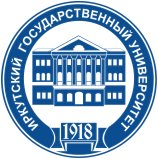History and theory of European integration
Professor in charge: Elizaveta Matveeva
Programme: BA in International Relations
Semester: 7
Course aims & Learning outcomes
The main objective of the course is to provide students with deep understanding of the most important integration theories and of ideas that laid the foundations for the European integration, as well as with comprehensive knowledge of key stages in the development of the European Communities and the European Union.
By the end of the course students will
- have knowledge of the historical development of the European integration;
- be aware of the key European integration theories and will be able to discuss the relative merits and applicability of major theoretical perspectives for analysing European integration;
- be able to analyse the history and function of the EU through different theoretical models;
- be able to apply different theoretical frameworks to empirical questions and chosen case studies;
- be able to formulate clear and coherent arguments in written and oral contributions, to develop a research paper on a well defined research question.
Prerequisite courses
Course “International integration and international organizations”, BA in International Relations, 3d year, 2nd semester
Course schedule / content
Part 1. Europe as a theory and as an idea
European idea in history. The construction of a common European past.
The “founding fathers”: personal histories and personal perceptions in the construction of ever closer Union
Key theories of European integration: federalism; functionalism, neofunctionalism and postfunctionalism; transactionalism; intergovernmentalism and liberal intergovernmentalism; institutionalism; multi-level governance approach; policy network analysis; consocialism
Part 2. History of European integration: a general overview
The origins and development of the European Communities (EU) in a wider context: the legacy of the World War II, post-war reconstruction, the Cold War, decolonisation, the fall of communism, globalization.
Nation states and their national interests in European integration.
Wider and deeper Europe: EU enlargements. From sectoral integration and free trade area to the multi-level governance system.
Part 3. EU institutional framework and decision-making mechanisms
Institutional development of the European Union. Evolution of decision-making mechanisms in the EU. The question of competence in the EU.
Positive and negative integration. EU legislation and case-law. Application of EU law
A changing nature of the relationship between the EU and its member-states.
Teaching Methods
The course consists of lectures (part 2; 18 hours) and seminars (parts 1,3; 36 hours).
Assessment
The assessment for this course consists of the following elements:
Class attendance and active participation – 15%
Essay (students are expected to write two 2,000-word essays on European idea and European political leaders’ (founding fathers of the EU and their perceptions of integration process) – 20%
Case study presentation (students are expected to present a short report based on the analysis of EU legislation and case-law and a report on one of the key theories of European integration) – 30%
Final research paper (students are expected to submit a final research paper on the evolution of decision-making procedures in a particular area of EU competence) – 35%
Indicative Reading
Jones E., Menon A., Weatherill S. (eds) The Oxford Handbook of the European Union, Oxford University Press, 2012
Dinan, D. Europe Recast: A History of European Union, 2nd edition, Boulder: Lynne Rienner, 2014
Rosamond, B. Theories of European Integration, Macmillan, 2000
Bache I., George S., Bulmer S., Politics in the European Union. 3rd edition, Oxford University Press, 2011
Wiener A. and Diez T. (eds) European Integration Theory, 2nd edition, Oxford University Press, 2009
Bomberg E., Peterson J., Corbett R. The European Union: How Does it Work?, Oxford University Press, 2012


